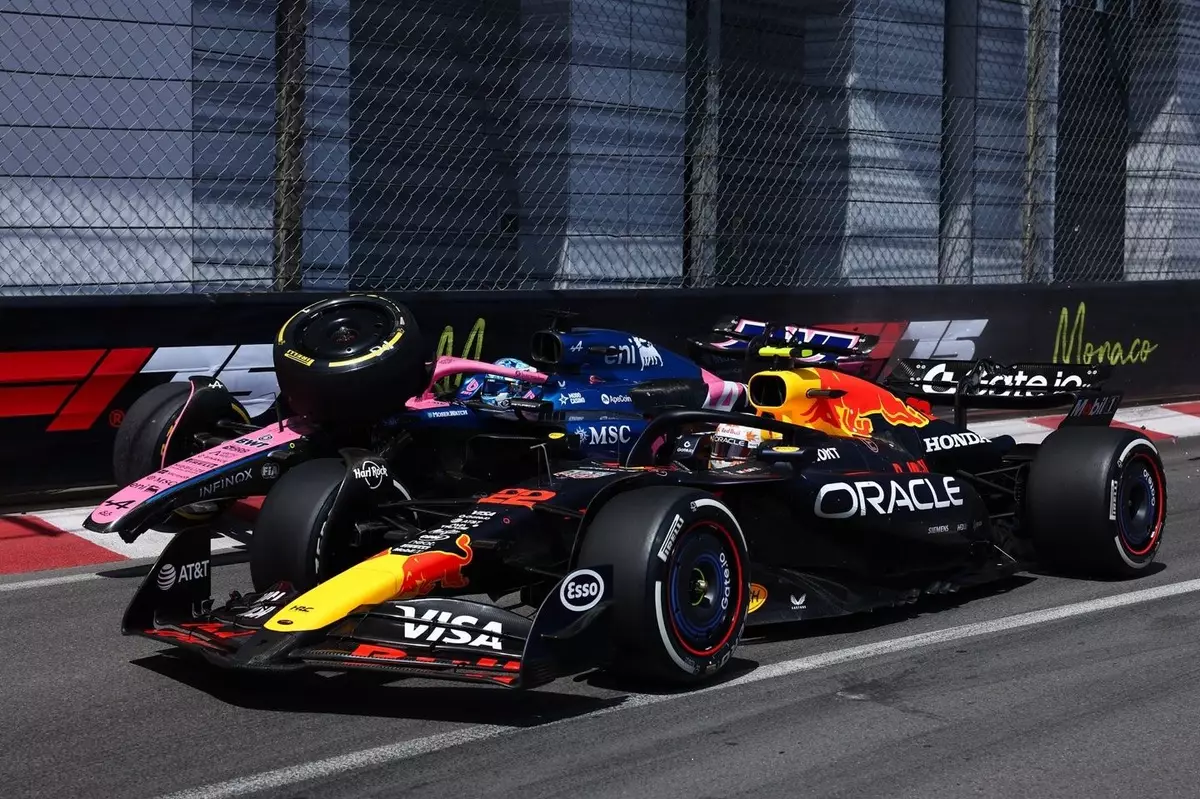In the high-stakes world of Formula 1, split-second decisions can lead to dire consequences. Such was the case during the Monaco Grand Prix when Pierre Gasly found himself at the center of a controversial collision with his former teammate, Yuki Tsunoda. Gasly, representing Alpine, has pointed fingers at Tsunoda, alleging that the Japanese driver moved under braking, a claim that incited a fiery debate about responsibility on the track. This incident has not only led to a premature exit for Gasly but has also reignited discussions about driver conduct and the intricacies of racing dynamics in one of the most challenging circuits on the calendar.
Gasly’s accusations seem to stem from a moment of desperation. Positioned in 17th and 18th place after an early pit stop, contact between the two ultimately resulted in a violent crash. Gasly, in a bid to clarify his “no brakes” radio message that aired during the crash, emphasized that the comment was misrepresented. He insisted he had the brakes and that it was Tsunoda’s erratic movement that caused the mishap. “I had the brakes,” Gasly stated, adding that Tsunoda’s braking pattern throughout the race forced him to make risky decisions. His lament was clear: in Formula 1, drivers must maintain their lines, especially on a narrow circuit like Monaco where two cars simply can’t occupy the same space.
A Defensive Stance or Erratic Maneuvering?
Tsunoda’s response to Gasly’s critique was equally forthright. Upon hearing Gasly’s description of his driving as “erratic,” he expressed disbelief. “What? I don’t think I did anything wrong,” he retorted, steadfast in his conviction that his defensive maneuvers were justified. The contrasting viewpoints from both drivers illustrate the high tensions and competitive spirits inherent in Formula 1. Tsunoda’s insistence that he would make the same decisions again reveals a deeper layer of the sport: the clash between aggressive racing and the responsibility that comes with it.
Indeed, racing incidents often lead to finger-pointing, but they also reflect the fine line between boldness and recklessness. For Tsunoda, hugging the wall was a tactical decision reflecting both his awareness of Gasly’s intentions and his need to safeguard his position. This incident is an emblematic representation of racing under relentless pressure, showcasing how easily a minor miscalculation can accelerate into a career-shaping moment for both drivers involved.
The Bigger Picture: Alpine’s Struggles and Future Hopes
The rift between the two drivers was exacerbated by Alpine’s overall lackluster performance during the Monaco weekend. With a qualifying session that saw Gasly finish in a dismal 18th place, the team’s struggles were evident. French driver Franco Colapinto, who managed to finish 13th in the race, underscored the team’s uphill battle. Gasly himself had anticipated difficulties at Monaco, acknowledging that the A525 car didn’t seem suited to the technical demands of the circuit.
Alpine’s inability to fine-tune their car for the unique characteristics of Monaco raises critical questions about their engineering strategy. Gasly noted that the car’s deficiencies in terms of ride quality had become glaringly apparent. “We just lack compliance at the moment,” he admitted, hinting at the fundamental issues that need addressing if the team is to stay competitive in the tightly contested Formula 1 landscape.
The forthcoming Spanish Grand Prix presents an opportunity for redemption. With its high-speed corners offering a contrasting environment to Monaco, both drivers are poised to leverage their experiences for a better showing. Gasly’s optimism suggests that the past weekend’s misadventures could serve as catalysts for improvement, potentially setting the stage for a resurgence in Alpine’s fortunes.
The Aftermath: What Lies Ahead
The fallout from the Monaco incident will undoubtedly linger, as team dynamics can be fragile under the immense pressure of the Formula 1 circuit. Moving forward, how both Gasly and Tsunoda handle their relationship—whether reconciliatory or antagonistic—could define their respective seasons. This episode serves as a reminder of the compelling narratives unfolding in every Grand Prix, drawing viewers into the drama both on and off the track. Ultimately, the resilience shown by these drivers will shape not only their careers but also the future trajectory of the teams they represent. Both must now channel their frustrations into performance as they face a grueling season ahead, with every race offering a chance for both vindication and glory.

